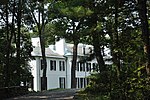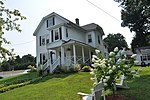MetroWest Water Supply Tunnel

The MetroWest Water Supply Tunnel (MWWST) is an advanced underground aqueduct that supplies potable water to residents of much of Greater Boston. It is part of the Massachusetts Water Resources Authority (MWRA) water supply system, having entered operation in November 2003.This aqueduct starts at the John J. Carroll Water Treatment Plant in Marlborough, Massachusetts, and ends at an MWRA terminal in Weston, Massachusetts. It is about 17.6 miles (28.3 km) long (28.3 km) and is constructed far below ground level, mostly in bedrock. It includes several vertical risers called shafts, lined with steel, used to make connections throughout the system. It is built underneath portions of Marlborough, Southborough, Framingham, Wayland, and Weston, Massachusetts, with a wye intersection 235 feet (71.6 m) below the Massachusetts Turnpike former toll booths at State Route 128.
Excerpt from the Wikipedia article MetroWest Water Supply Tunnel (License: CC BY-SA 3.0, Authors, Images).MetroWest Water Supply Tunnel
Walnut Hill Trail,
Geographical coordinates (GPS) Address Nearby Places Show on map
Geographical coordinates (GPS)
| Latitude | Longitude |
|---|---|
| N 42.311111111111 ° | E -71.585 ° |
Address
Walnut Hill Trail
Walnut Hill Trail
Massachusetts, United States
Open on Google Maps










